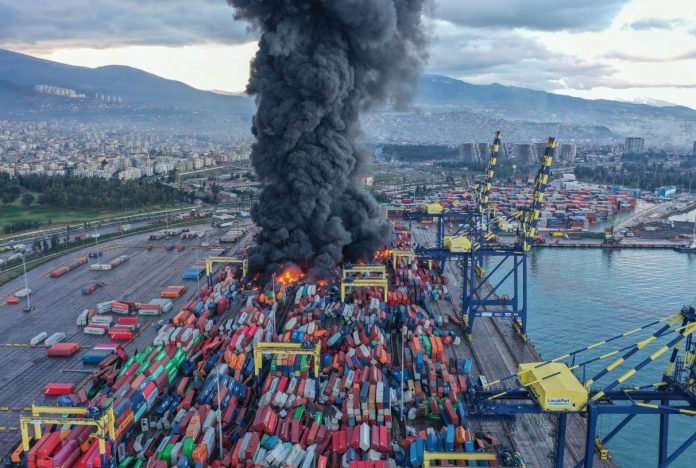An analysis of TT Club, international freight and cargo handling insurer, says that fire accounts for one-fifth of all losses and damage to port equipment, posing a significant safety risk to workers and terminal users.
TT Club is urging cargo handling and terminal operators to recognize fire as a major threat to port and terminal equipment. A review of the insurer’s claims data over the past decade shows that nearly 1,600 fire-related claims were recorded, with approximately 19% involving such equipment. This percentage has remained relatively stable over the years, with only minor fluctuations.
“Fire risk not only poses a significant concern in terms of insured losses and obvious operational disruption, fire also presents a real and significant risk to the safety of the workforce, facility visitors/users and indeed the general public,” noted Neil Dalus from TT’s Loss Prevention department.
“As a result, we strongly advise that fire detection and suppression systems in port equipment are considered by operators as critical safety measures.”

Additionally, TT Club highlights the importance of the recently published white paper by the Port Equipment Manufacturing Association (PEMA), titled Fire Detection and Suppression Systems for Mobile Port Equipment. The report underscores the critical role of regular maintenance, collaborative risk assessments, compliance with industry standards, and adherence to mandatory regulations in mitigating fire risks.
The PEMA white paper also provides valuable insights into available fire detection and suppression technologies, emerging trends in electrification and automation, and the environmental considerations associated with equipment fires.

In summary, Dalus concludes, “TT joins with PEMA in urging the installation of state-of-the-art fire suppression systems in all port equipment together with strict adherence to manufacturers’ service protocols and remote monitoring for autonomous equipment. Going forward, we advise the close collaboration between fire suppression system suppliers, equipment manufacturers and port operators in tackling the dangerous trend in the consistent risk of fire.”







